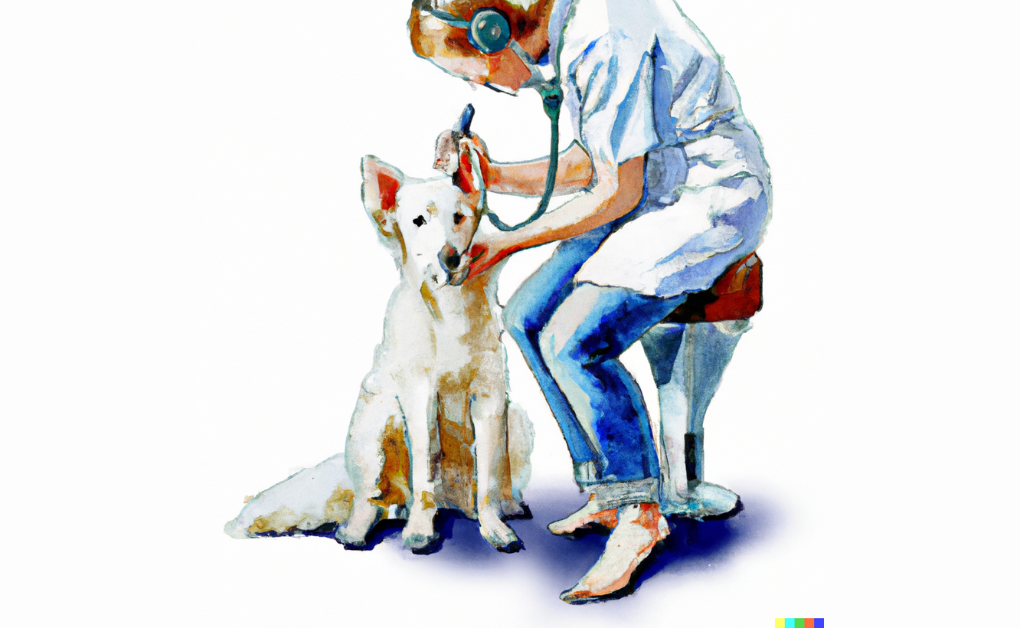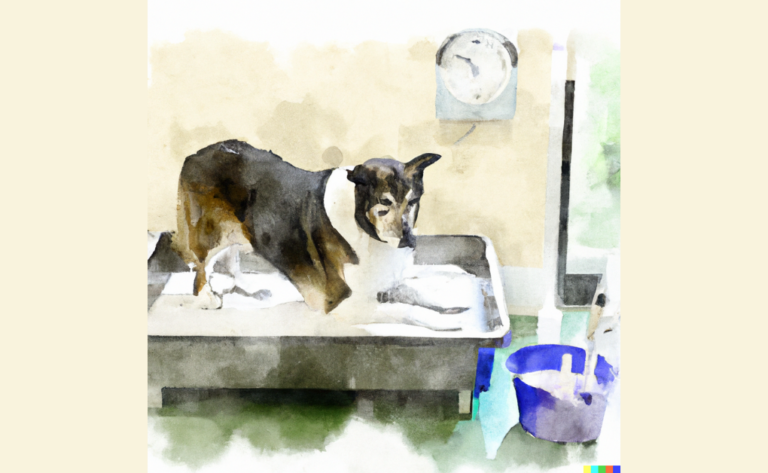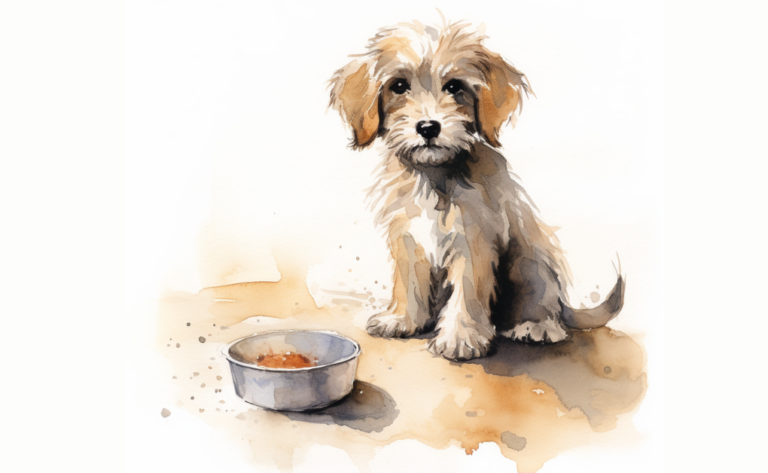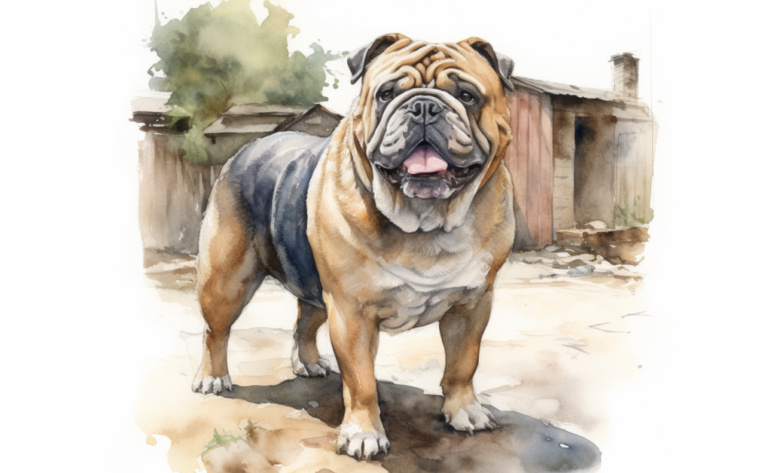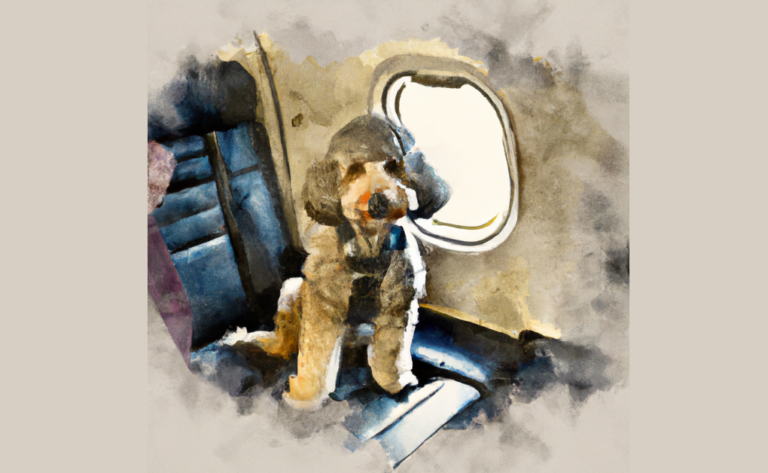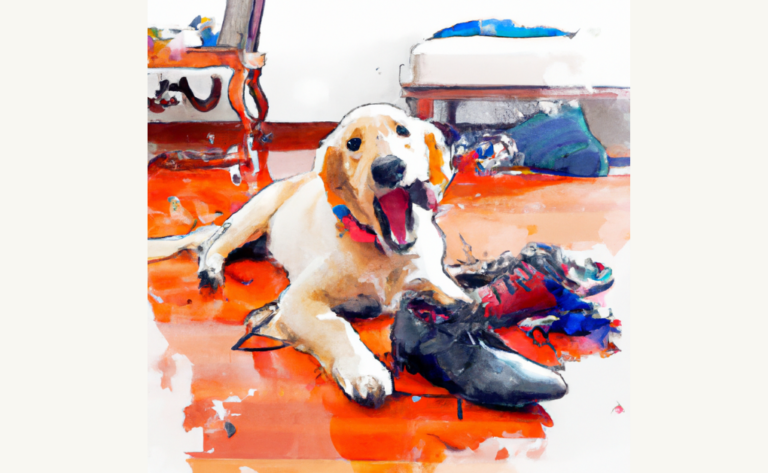Canine Glue Ear: What is that Gunk in Your Dog’s Ear?
Introduction
Molly, a loving dog owner, was baffled when she noticed a strange, gunky substance in her dog’s ear. Concerned about her furry friend, she promptly sought help from her veterinarian. It was then that she learned her dog had Canine Glue Ear, a condition she had never encountered before. Eager to find out more, Molly embarked on a mission to understand the ins and outs of this peculiar condition.
Glue in a dog’s ear refers to a condition known as otitis media with effusion. This ailment is marked by accumulating a sticky, glue-like substance, or a gooey mucus plug, in the middle ear – the space behind the tympanic membrane or eardrum. However, this terminology needs to be used in veterinary medicine.
In canines, equivalent conditions might develop, involving the accumulation of wax, debris, or infectious material within the ear canal. The architecture of a dog’s ear, particularly a dog’s ear canal, is more vertical and deep compared to that of humans. This structural difference makes them susceptible to various ear conditions. Such conditions often lead to discomfort, inflammation and may even escalate to an ear infection, including middle ear infection, if not promptly addressed.
The ear canal in dogs can also be a breeding ground for bacteria and yeast, especially if it needs to be kept clean and dry. It’s akin to a sticky situation where a blob of super glue has sealed off the passage, causing discomfort and potential health risks. Moreover, some breeds are more predisposed to ear issues due to their anatomical characteristics or genetic susceptibility.
It’s important to note that if the middle ear, the space located behind the eardrum or tympanic membrane, gets infected (otitis media), it can result in a ruptured eardrum if not treated in time. Another condition that can be likened to “glue ear” in dogs is Primary Secretory Otitis Media (PSOM), which is characterized by a highly viscous mucus plug filling the middle ear. However, PSOM is more commonly seen in certain breeds.
To spot potential ear infections, look for changes in your dog’s behavior or any signs of discomfort around the ear area, like pawing or shaking their head. Regularly inspecting your dog’s outer ear and ear flap can also help you catch infections early. Always consult your veterinarian for the best course of action for any concerns.
What Causes Ear Glue in Dogs?
While “glue ear” is not typically used in veterinary circles, it describes a situation where a dense, sticky substance amasses in a dog’s ear. This situation can be akin to certain cases of chronic otitis or ear inflammation. The causes of this sticky predicament in dogs are varied and can include the following:
Allergies
Dogs can suffer from allergies like humans, with their ears being the most commonly affected area. Allergies to the environment (such as pollen, dust mites, or mold) or food can incite inflammation and swelling in the ear canal, consequently leading to excessive ear wax production. This overproduction can result in a viscous, glue-like substance blocking the ear canal. Dogs enduring chronic allergies may face repeated instances of this condition.
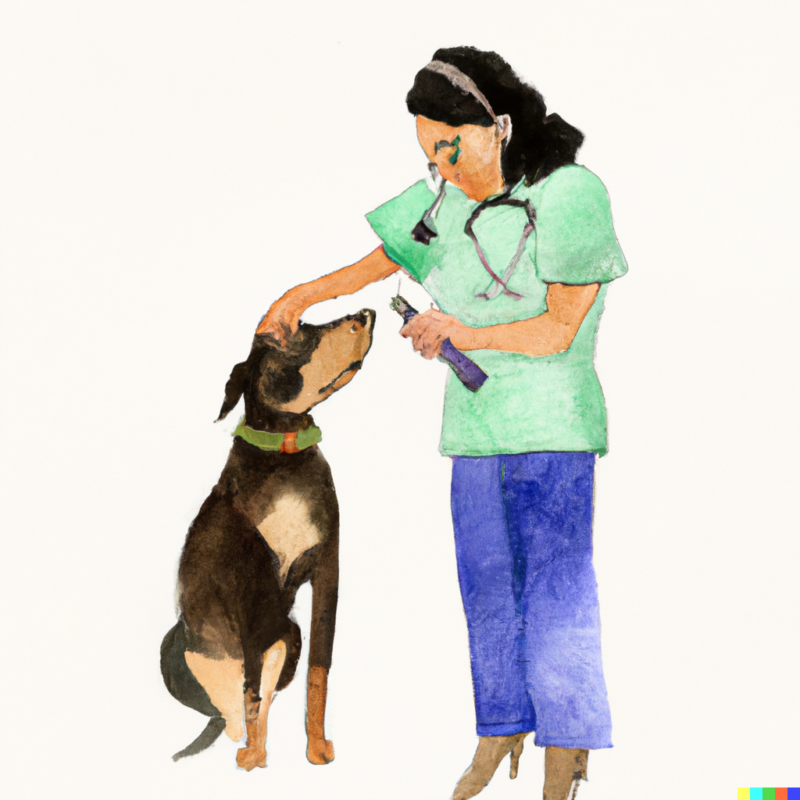
Parasites
Tiny parasitic bugs known as ear mites can invade a dog’s ear canal, causing irritation and discomfort. The dog’s reaction to these parasites can produce a thick, sticky discharge that’s either black or brown. Given that ear mites can easily spread among pets, it’s crucial to treat all household pets if one is diagnosed with an infestation.
Bacterial and Yeast Infections
While normal levels of bacteria and yeast are usually present in a dog’s ear, these can increase and result in an infection under certain circumstances, like a moist environment in the ear, a weakened immune system, or hormonal imbalances. Such infections typically cause the ear to produce a thick, pus-like substance, which can become extremely sticky if wax build-up occurs simultaneously.
Foreign Bodies
Items like grass seeds, tiny insects, or other foreign materials can sometimes get stuck in a dog’s ear canal. This foreign material can incite significant irritation and inflammation, increasing secretion from the ear glands. The substance produced may be sticky and wax-like.
Anatomical Predispositions
Certain breeds, such as Cavalier King Charles Spaniels, are more susceptible to ear issues due to their ear position and size. Dogs with long, drooping ears, like Basset Hounds, Cocker Spaniels, or Labradors, have reduced air circulation within their ear canals, creating a warm, humid environment where bacteria and yeast thrive. This often leads to chronic infections and the overproduction of wax and other secretions.
Underlying Health Problems
Certain health conditions can make a dog more prone to developing a glue ear. For instance, Hypothyroidism, an underactive thyroid gland, can result in skin changes and increased vulnerability to infections, including ear infections. Certain hereditary autoimmune diseases can also cause ear canal inflammation, leading to excessive wax production and the potential for glue ear. Managing the underlying condition is often necessary to prevent recurring ear issues in dogs with these health problems.
These are just some potential causes. Each case is unique and may warrant diagnostic testing by a vet to pinpoint the exact cause. It’s important to note that if a mucus plug forms in a dog’s middle ear, it may cause parts of the eardrum to bulge, causing pain and discomfort. In some cases, a procedure called a myringotomy may be necessary to relieve the pressure. This condition, known as Secretory Otitis Media, is often seen in breeds like the Cavalier King Charles Spaniels.
As always, if you notice any changes in your dog’s behavior or physical condition, such as excessive ear scratching, head shaking, or a foul odor emanating from the ears, it’s best to seek veterinary attention promptly.
Watch for Glue Ear Symptoms
Symptoms associated with “glue ear” or chronic otitis in dogs might consist of the following:
- Constant scratching at the ears: Dogs may also scratch other parts of their head or neck, indicating possible ear pain.
- Persistent head shaking, tilting, or even an unusual head tilt: Dogs might also rub their heads against objects to relieve discomfort.
- Inflammation and redness of the ear canal: This could be a reaction to a foreign substance or related products used in the ear that irritates.
- Production of a dense, sticky, glue-like effusion in the ear: This substance could block the ear canal, leading to temporary hearing loss.
- Different colored discharge from the ear: Discharge can vary in color, including shades of brown, yellow, or black, and may indicate an ongoing infection.
- An unpleasant or yeasty odor emanating from the ears: This could suggest the presence of a bacterial or fungal infection.
- Alterations in behavior such as sluggishness or irritability: Dogs with discomfort might cry out in pain, especially when their ears are touched.
- Loss of balance or coordination, often accompanied by a head tilt or rapid eye movement: In severe cases, this can signal a more serious condition affecting the inner ear or brain.
- Temporary or permanent hearing loss in severe or chronic cases: This might cause your dog to react less to auditory stimuli.
- Pain or discomfort shown by whimpering or pulling away when their ears are handled: If the dog is pawing at its ear or shows signs of stomach upset, this might indicate severe pain or discomfort.
- Cough: In some cases, ear problems can lead to coughing, though this is less common.
These symptoms suggest the necessity of attention to pet health and prompt consultation with a veterinarian. The symptoms can vary from dog to dog, so if your pet shows any signs of discomfort or change in behavior, it’s best to seek professional advice immediately.
How Do Veterinarians Diagnose and Treat Otitis Externa in Dogs
The process of diagnosing chronic otitis in dogs involves several critical steps. The following procedures are typically undertaken by veterinarians:
Clinical Assessment
In this stage, the veterinarian conducts an in-depth examination, which includes studying the dog’s behavior, searching for observable symptoms, and executing a physical examination. The vet will inspect for indications such as inflammation, swelling, or ear discharge and pay attention to abnormal sounds. A squelching noise, for instance, might suggest the presence of a sticky substance in the ear. The dog’s reactions, like discomfort, pain, or excessive scratching, can offer hints about the condition, even when the veterinarian takes a look with an otoscope.
Otoscopy
During an otoscopy, the vet employs an otoscope – a device with a light and a magnifying lens – to thoroughly examine the ear canal. This enables the vet to detect any irregularities in the structure of the ear canal, signs of inflammation, the presence of foreign bodies, or evidence of parasites. It also assists them in assessing the condition of the eardrum, or the tympanic membrane, which can rupture in severe or chronic otitis.
Cytology
Cytology requires a sample of the ear discharge or the dense, gluey substance within the ear. The specimen is then stained and scrutinized under a microscope. This test aids the vet in identifying cells, bacteria, yeast, or mites in the ear discharge. The presence and type of these organisms can provide invaluable clues about the cause of the ear condition.

Culture and Sensitivity Examination
The vet might conduct a culture and sensitivity examination if a bacterial infection is suspected. In this procedure, bacteria from the ear are cultivated in a laboratory to identify the exact species involved. The sensitivity part of the examination involves subjecting the bacteria to various antibiotics to determine which is most effective at eliminating the bacteria. This test ensures that the treatment chosen is most effective for your dog’s infection and can help decide if antibiotics like Neosporin are appropriate.
Blood Tests or Allergy Testing
If the vet suspects the ear condition is connected to an underlying health issue, they may recommend blood tests. Allergy tests, for instance, may be suggested if allergies are suspected. These tests can pinpoint what your dog is allergic to, whether it’s a specific type of food or an environmental allergen like pollen.
Advanced Imaging
Advanced imaging techniques, such as a CT or MRI scan, might be used in severe cases or when the involvement of the middle or inner ear is suspected. A CT scan provides detailed images of the ear canal and the structures within the ear, including the cartilage, enabling the vet to understand the extent of the problem better. More traditional imaging, such as an X-ray or radiograph, may be used in some cases. These imaging techniques can reveal issues not immediately apparent via standard examination, aiding the vet in determining the best course of treatment.
Utilizing a solvent to clean the ear might also be part of the diagnostic process. Each diagnostic stage offers vital information about the dog’s ear condition. However, every case is unique, so the diagnostic process may differ based on the dog’s symptoms and medical history.
Treatment for Glue Ear in Dogs
The treatment approach to chronic otitis in dogs is comprehensive and requires addressing the immediate symptoms, treating the underlying causes, and managing complications. Here are some frequently employed treatment methods:
Ear Cleaning and Middle Ear Flushing
The commencement of treatment typically involves cleaning the dog’s ear to eliminate the gluey substance obstructing the ear canal, which may include removing the mucus plug and flushing the middle ear. This procedure may need to be performed under sedation or anesthesia to ensure the dog’s comfort, often using a unique ear-cleaning solution capable of dissolving the discharge. Regular home cleaning of the dog’s ear may also be integral to the continuing treatment regimen.
Your vet will offer specific home-care instructions detailing the frequency and the solutions, such as hydrogen peroxide, for ear cleaning.
Topical Treatments
After cleaning, the vet usually applies the medication directly to the dog’s ear. This might be an antibiotic to counter a bacterial infection, an antifungal for a yeast infection, or corticosteroids and antibiotics to decrease inflammation and swelling within the ear canal. The medication could also incorporate a local anesthetic to mitigate pain. These medicines come in diverse forms, such as ointments, creams, and eardrops. Your vet will instruct you on the correct administration of these medications at home.
Oral or Injectable Treatments
Your vet may prescribe oral or injectable medications if a severe infection or deep-seated inflammation within the ear. These may encompass oral antibiotics, anti-inflammatory drugs, or allergy medications. Such treatments can help manage the root cause of the otitis and assist in averting recurrence.
Surgical Intervention
Surgery may be necessary in severe instances or when medical management proves ineffective. This could include a Total Ear Canal Ablation (TECA) or a lateral ear resection. These surgical procedures, which involve removing all or part of the ear canal, can significantly enhance the dog’s quality of life. Still, they do come with risks and necessitate a recovery period.
Addressing Underlying Conditions
Suppose your dog’s otitis is connected to an underlying issue, such as allergies, hormonal imbalances, or a compromised immune system. In that case, managing otitis these conditions becomes a key component of treatment. This may necessitate dietary modifications for food allergies, hormone replacement therapy for endocrine disorders, or immunosuppressive drugs for autoimmune conditions.
Ongoing Monitoring and Follow-up
Treatment of glue ear often necessitates regular follow-up visits to the vet to observe the dog’s response to treatment and implement any necessary adjustments. Ensuring effective management of the underlying cause is vital to prevent otitis from recurring. Your vet may recommend regular ear cleanings, routine check-ups, and ongoing medication as part of a holistic management plan.
While these treatment steps are generally part of a broad plan to alleviate the symptoms of glue ear, manage the root cause, and prevent future instances, each dog’s condition is unique. Hence, the treatment plan will suit your pet’s needs and circumstances. The frequency in the breed may also affect the treatment plan. It’s crucial to always consult a professional veterinarian for accurate information and advice about your pet’s health. If necessary, an effective alternative to using tape or bandages for shaping dog ears may also be discussed.
How To Prevent Otitis Externa in Dogs
In dogs, preventing otitis externa, or outer ear inflammation, involves several proactive steps to ensure optimal ear health. Here’s how you can reduce your dog’s risk:
- Regular Ear Checks: Familiarize yourself with what your dog’s ears look like when they’re healthy. Regularly inspect them for any redness, swelling, discharge, or foul odor. These could be indications of an ear infection. Also, observe for any changes in behavior, like excessive scratching, shaking of the head, or rubbing the ears against furniture or the floor, which could signal discomfort.
- Ear Cleaning: Regular ear cleaning can be a valuable part of routine grooming, especially for breeds prone to ear problems. Use a vet-recommended ear cleaning solution, and avoid using cotton swabs inside the ear canal, as this can potentially cause damage. Never use water for ear cleaning; it does not evaporate easily and could lead to infections. If your dog is uncomfortable with ear cleaning, consult your vet, who can provide guidance or perform the cleaning.
- Dry Ears After Water Exposure: If your dog loves swimming or getting wet, ensure you dry their ears thoroughly afterward. Moisture in the ear canal can create an environment conducive to bacterial and yeast growth.
- Regular Vet Checks: Regular veterinary checks can help catch and treat problems before they escalate. Your vet can thoroughly examine and provide necessary treatments or preventive measures.
- Proper Diet: A balanced diet can contribute to overall health, including immune function, which prevents infections. If your dog has food allergies, it might also be prone to ear infections, so working with your vet to identify and eliminate offending foods can be beneficial.
- Parasite Control: Use vet-recommended flea and tick control products. Parasites can contribute to ear problems, so regular control is key.
- Grooming: Regular grooming, particularly for dogs with long or hairy ears, can help prevent ear problems. Hair around or in the ears can trap moisture and debris, leading to infections. Some groomers or vets may suggest plucking hair from the ears – talk to your vet about whether this is a good option for your dog.
By taking these steps, you can help keep your dog’s ears healthy and reduce the risk of otitis externa. It’s essential, however, to consult with a professional veterinarian for accurate information and advice tailored to your dog’s specific needs and circumstances.
Frequently Asked Questions
Disclaimer: The information provided on this veterinary website is intended for general educational purposes only and should not be considered as a substitute for professional veterinary advice, diagnosis, or treatment. Always consult a licensed veterinarian for any concerns or questions regarding the health and well-being of your pet. This website does not claim to cover every possible situation or provide exhaustive knowledge on the subjects presented. The owners and contributors of this website are not responsible for any harm or loss that may result from the use or misuse of the information provided herein.

